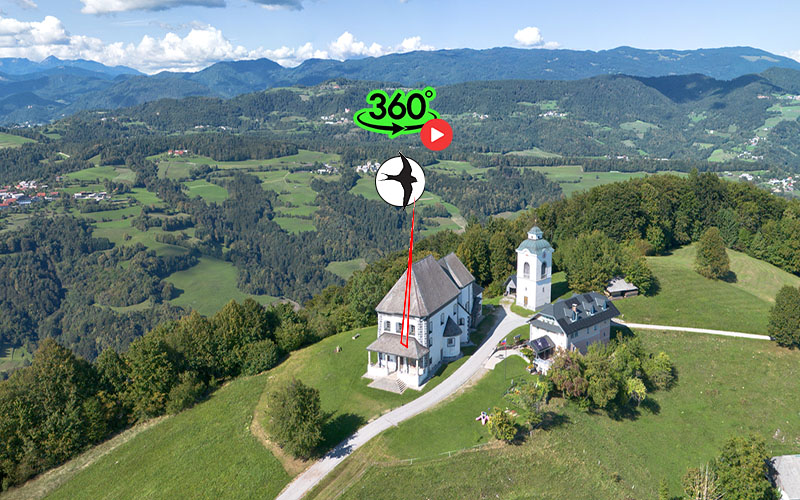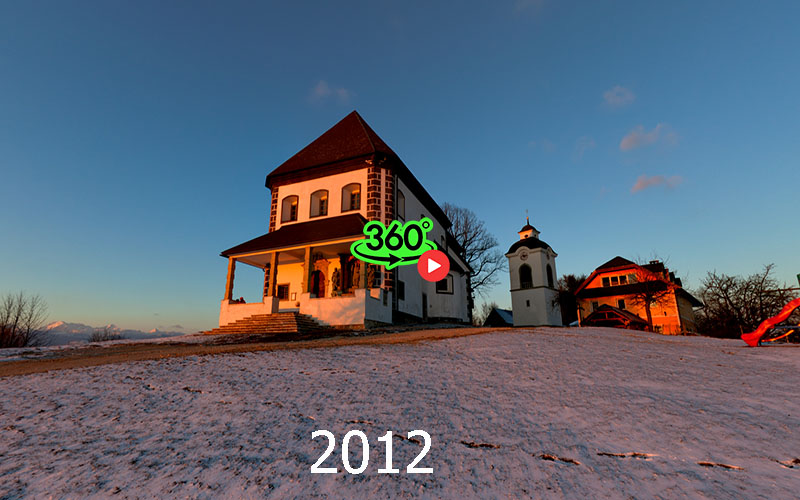
|
SLOVENIA | CHURCHES | MOUNTAINS |
Limbarska gora
|
|
|
Limbarska Gora, rising 773 meters above sea level, has been an important landmark in central Slovenia for centuries. Its name originates from the German Lilienberg (Mountain of Lilies), which over time evolved into Limberg, Limbarska Gora, and other variations. In the Middle Ages, it was the seat of the Lords of Limbarska, ministeriales of the Counts of Andechs, who had a castle on the northern ridge of the mountain. The castle was strategically positioned but had already fallen into ruin by the time of Valvasor. Today, Limbarska Gora is a popular excursion destination that combines natural beauty, cultural heritage, and recreation. At the very summit of Limbarska Gora stands the Church of St. Valentine, one of the most beautiful rural Baroque churches in Slovenia. It is a pilgrimage branch church of the Parish of Moravče, built around 1735, although some sources mention that the first church on this site was erected as early as 1667. The church was designed by Gregor Maček Jr., one of the most important Slovenian Baroque architects. Its nave is shaped like an elongated octagon, while the presbytery is nearly square and rounded at the corners with pilasters. Diagonally adjacent to it are two side chapels, and the rear chapels are semicircular. The bell tower stands separately from the main structure. The exterior of the church is surprisingly simple, adorned only with painted stitched borders, while the interior is richly articulated with Doric pilasters, triumphal arches, and thoughtfully arranged lighting. The church features a grand altar and six side altars, crafted from black marble between 1736 and 1743. One of them, the altar of St. Giles, contains a painting by Valentin Metzinger, a prominent Baroque painter. The organ, originally built in 1820, is no longer active but still bears witness to the area's rich musical tradition. Inside the church, there is also a Stations of the Cross, a simple folk artwork, and two chapels dedicated to St. Valentine. In 2014, the church underwent professional restoration, further emphasizing its cultural significance. St. Valentine was a martyr during the final persecution of Christians in the Roman Empire. His feast day, February 14th, is associated with love, spring, and health. In the past, large pilgrimage gatherings took place on Limbarska Gora, especially during Pentecost, when mothers prayed for the health of their children. Limbarska Gora is accessible from multiple directions — from Moravče, Blagovica, Trojane, and other nearby towns. Hikers can choose among several marked trails, including the European Long-Distance Path E6, the Rokovnjaška Trail, the NOB Memorial Trail from Domžale, and the Moravče Mountain Trail. Cultural events often take place on the meadow below the church, bringing the local community together. In 1999, Limbarska Gora received its first digital visualization, placing it at the forefront of the MojaSlovenija project. This initiative aims to digitally document Slovenian towns, natural landmarks, and cultural heritage. The visualization of Limbarska Gora enabled broader access to information and encouraged the local community to preserve its heritage. Limbarska Gora is a historical symbol, a recreational haven, and a cultural gem. The Church of St. Valentine is its heart, uniting art, architecture, and spirituality. With its first visualization in 1999, Limbarska Gora became a pioneering example of digital documentation in Slovenia, giving it special significance within the MojaSlovenija project. Preserving Limbarska Gora means preserving a piece of Slovenian identity — and that is worth every step to its summit. |

 virtual excursions
virtual excursions
